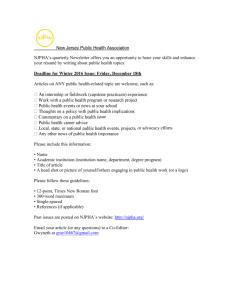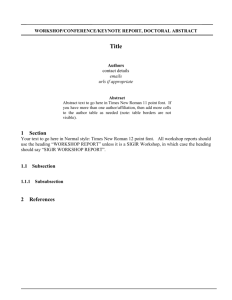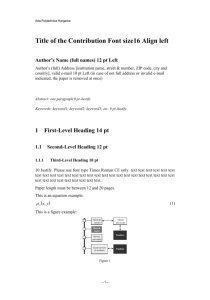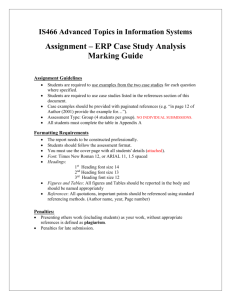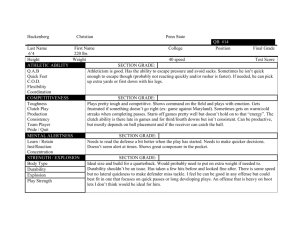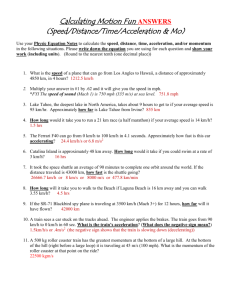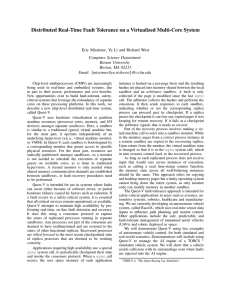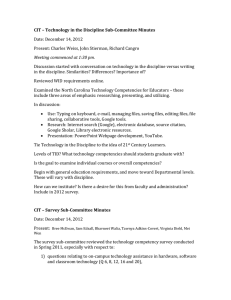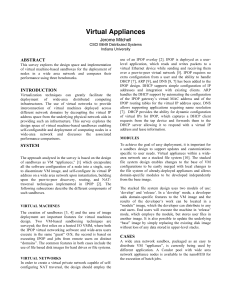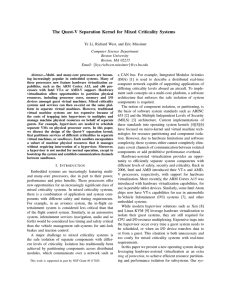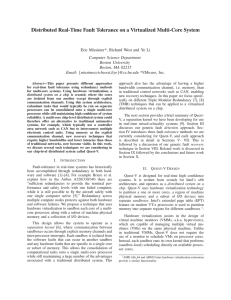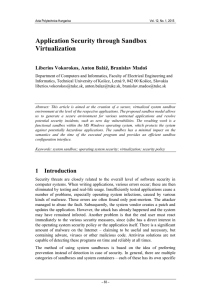Lab Report Guidelines
advertisement
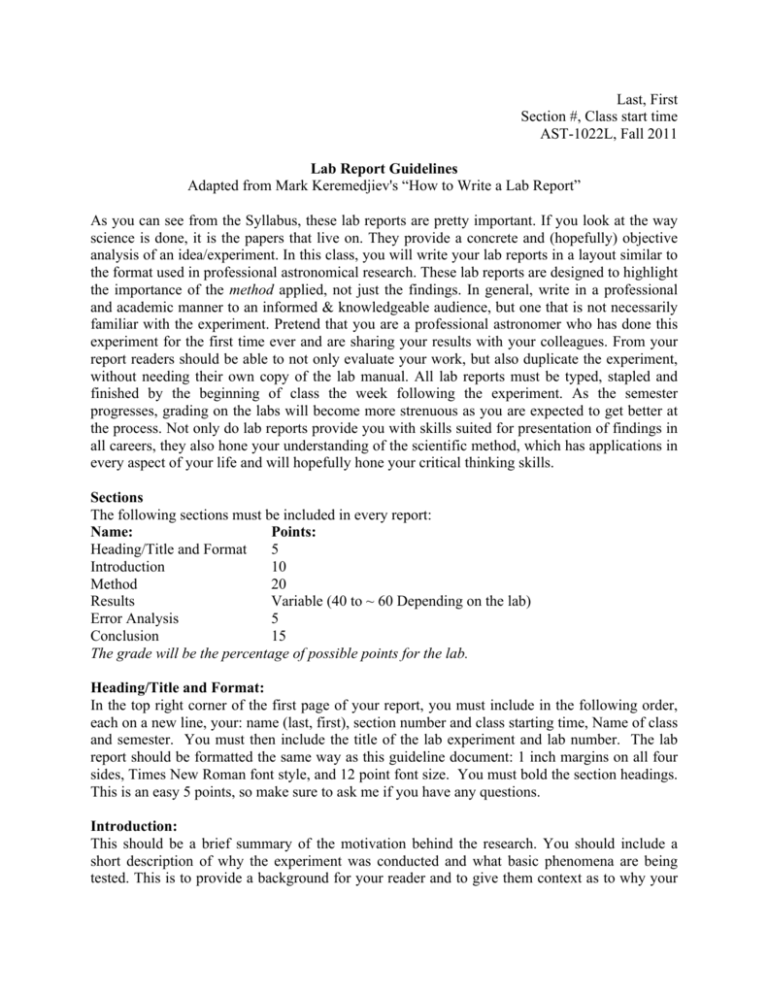
Last, First Section #, Class start time AST-1022L, Fall 2011 Lab Report Guidelines Adapted from Mark Keremedjiev's “How to Write a Lab Report” As you can see from the Syllabus, these lab reports are pretty important. If you look at the way science is done, it is the papers that live on. They provide a concrete and (hopefully) objective analysis of an idea/experiment. In this class, you will write your lab reports in a layout similar to the format used in professional astronomical research. These lab reports are designed to highlight the importance of the method applied, not just the findings. In general, write in a professional and academic manner to an informed & knowledgeable audience, but one that is not necessarily familiar with the experiment. Pretend that you are a professional astronomer who has done this experiment for the first time ever and are sharing your results with your colleagues. From your report readers should be able to not only evaluate your work, but also duplicate the experiment, without needing their own copy of the lab manual. All lab reports must be typed, stapled and finished by the beginning of class the week following the experiment. As the semester progresses, grading on the labs will become more strenuous as you are expected to get better at the process. Not only do lab reports provide you with skills suited for presentation of findings in all careers, they also hone your understanding of the scientific method, which has applications in every aspect of your life and will hopefully hone your critical thinking skills. Sections The following sections must be included in every report: Name: Points: Heading/Title and Format 5 Introduction 10 Method 20 Results Variable (40 to ~ 60 Depending on the lab) Error Analysis 5 Conclusion 15 The grade will be the percentage of possible points for the lab. Heading/Title and Format: In the top right corner of the first page of your report, you must include in the following order, each on a new line, your: name (last, first), section number and class starting time, Name of class and semester. You must then include the title of the lab experiment and lab number. The lab report should be formatted the same way as this guideline document: 1 inch margins on all four sides, Times New Roman font style, and 12 point font size. You must bold the section headings. This is an easy 5 points, so make sure to ask me if you have any questions. Introduction: This should be a brief summary of the motivation behind the research. You should include a short description of why the experiment was conducted and what basic phenomena are being tested. This is to provide a background for your reader and to give them context as to why your experiment is important. If possible, find real-world examples of the experiment, or describe some of the historical background of the findings. If you do pull from sources from outside of class or the lab manual you must cite them! Use something like MLA for citations with a brief works cited at the end of the lab report, but don't get bogged down in the citation details. Method: This is a weighty section where you should describe how you did the experiment. Don’t just copy this out the manual. Include the apparatus used in the experiment. I want you to tell me what steps you took, what were some of the difficulties and where do you think errors might occur. I’m not asking for “I then lifted the ball into the air with my thumb and forefinger and after waiting a couple seconds, I released the ball with a resounding plop into the sandbox.” A simple, precise version would be, “the ball bearing was dropped into the sandbox.” I want specifics, but not a novel (however, do note that it is better to err on the side of too much information rather than too little). You will get the hang of it very quickly. If you need an analogy, think of reading a recipe for cooking. It is precise, efficient, but still tells you exactly what needs to be done to reproduce the result. Remember, from this section alone, someone should have all the information to do the experiment and get the result. Results: The meat and potatoes of your report, as it were. Here you will present your findings in a comprehensive and intelligible manner. You should include relevant graphs, analysis, and error analysis to convey to your reader just what was found over the course of your experiment. Specifically, this section must include the raw data obtained from the lab (preferably in a nice table) as well as equations applied and final numbers. Make sure your graphs and tables are correctly labeled. One of the skills you will be learning in this class is how to graph and plot your data using the computer. During the experiment, you will be taking data by hand and plotting by hand on provided graph paper. It is important that you learn to use Excel, or any other graphing or plotting program to show your data in tables and graph/plot them for your lab report write up. Additionally, this will also be the section specific questions assigned in the lab description should be answered. Usually, this is called the “Your Report” section in each lab, in the lab manual. Sometimes the lab will come with a worksheet external to the manual that I will provide. Error Analysis: You also must include error analysis. Explain what were sources of error, as well as what could and could not be done about it. Try to determine which errors are systematic and which are random. Trust me, there are many sources of error out there you will not have trouble filling up this part of the section. Try to think through as many sources of error as you can. Be specific, do not just list the types of error. Conclusion: Here is where you summarize what you found. If you obtained answers that seem wrong, or counter intuitive, do not change them. Use this section to explain why you think you got those results, but publish them anyway. Sometimes in science the answer that seems least likely to be true, tends to be the right one. Again science is more about the method and application of ideas than the final, be all answer. If we always got the expected answer, the world would be a pretty boring place. Should you feel ambitious, you can wax poetic and attempt to extrapolate your findings to the bigger picture, but this is not required and tends to be the least scientific part of a paper. At the end of your lab attach the initialed data sheet, and any other materials you filled out, from the day we did the lab. However, I will just be checking this for the initial. All of your data must be neatly contained in the lab report itself!
